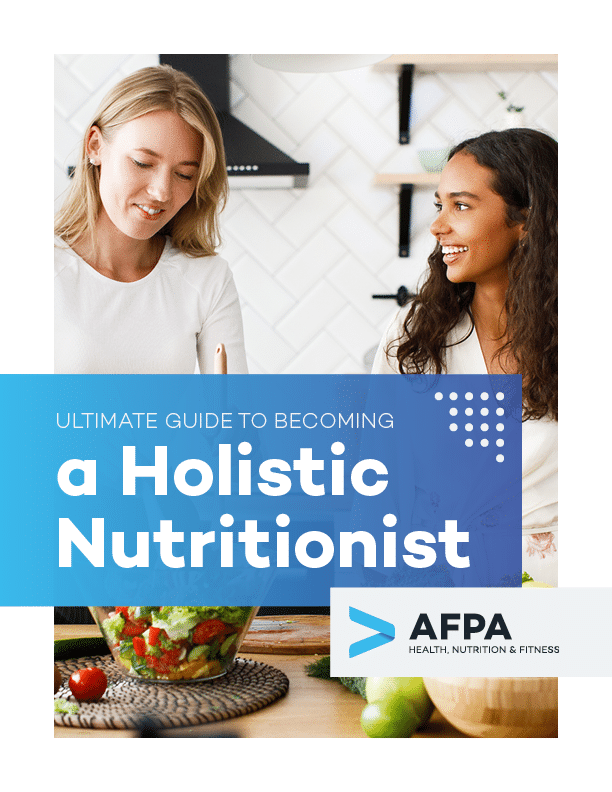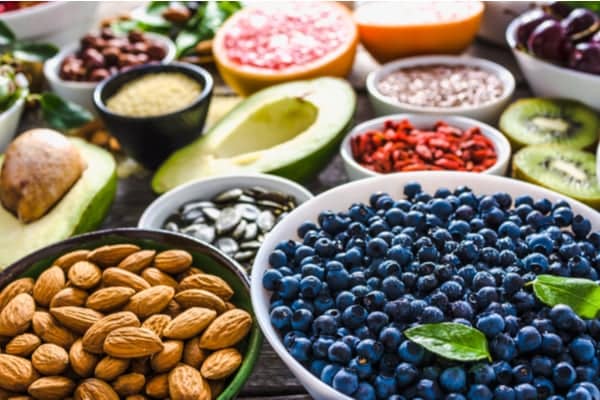Frequently Asked Questions about the Food Ingredient Label
Almost all packaged foods worldwide are required to have an information panel that contains nutrition facts and a list of ingredients.
While there have been improvements to food labeling requirements to help the general public understand what nutrients and ingredients foods consist of, it can still be tricky—especially when the food ingredient list is long and contains ingredients you don’t recognize.
This article answers common questions about the food ingredient label so you can make the best choices for your body. It also provides you with eight dos and don’ts when approaching food ingredient labels.
If you are a health coach, this article provides you with information to empower your clients to make sensible food choices for their overall diet and lifestyle while also helping them to understand information about the foods they are consuming.
What Ingredients Need to Be Listed on the Ingredient Label?
All ingredients that the food contains, including primary ingredients, added nutrients, flavors and spices, sweeteners, and additives, need to be listed on the ingredient label.
There are some ingredients that have different origins or chemical forms but have the same impact on nutrition. For example, added sugar can be found as corn syrup, high fructose corn syrup, agave nectar, honey, organic honey, molasses, brown rice sugar, beet sugar, or other words that refer to the chemical form of sugar, including fructose, maltose, and, galactose.
Sodium is added to foods in different forms, including salt, brine, sea salt, baking soda, monosodium glutamate (MSG), and sodium benzoate.
Ingredients such as lard, partially hydrogenated oil, hydrogenated oil, tallow, and shortening all contribute to the total saturated fat in foods.
In What Order Are Ingredients Listed?
Food ingredient lists contain the most abundant ingredient (by weight) first and successively list the rest of the ingredients based on their total weight contribution to the final product.
For example, imagine you are comparing two types of wheat bread. The first bread’s ingredient label lists whole wheat flour as the first ingredient, but the second bread lists white flour as the first ingredient. If you are aiming to consume more complex carbohydrates, the first option is likely your best bet.

Get Your Free Guide to Becoming a Holistic Nutritionist
Learn about the important role of holistic nutritionists, what it takes to be successful as one, and how to build a lucrative, impactful career in nutrition.
Why Do Some Ingredients Appear to Have Multiple Names?
Food manufacturers are required to utilize names people can identify and that are unique to that specific ingredient. That may mean the source of the sugar differs or that the chemical form of that ingredient is being specified. For example, sea salt and sodium hydrogen carbonate (baking soda) are both made of salts, so they contribute sodium to the nutrition of the food.
In some cases, it may mean that ingredient lists contain long, technical names, such as with the baking soda example above. This doesn’t mean an ingredient is harmful or unnatural; rather, it is an effort of the manufacturing company to be as accurate as possible.
The same goes for ingredients that contribute fat or added sugar but have differing names. Multiple ingredients contribute these nutrients to the food, and they will be reflected on the nutrition facts label.
In this sense, it is not necessarily that ingredients are listed with different names, but rather that manufacturers are required to be as specific as possible about the ingredient itself, listing its source and/or its chemical form.
Some organizations criticize food companies for trying to deceive consumers about the ingredients found in foods. Terms like “hidden sugar” are used to refer to alternative forms of sugar used in the food that makes food seem healthier than it is. While it is true that food companies may consciously make ingredient choices to make their food appear healthier or better than conventional or competing options despite having similar nutrition facts labels, they are required by law to disclose all ingredients that are present in important amounts, and the nutrition facts label must be truthful. In other words, if a food lists organic agave nectar as an ingredient, it must contain organic agave nectar. It cannot contain white table sugar and list organic agave nectar instead.
Whether that impacts the nutritional value of the food itself depends on the amounts added to the food.
In that sense, if you are keeping your eyes out for added sugar, companies that sell food in the US are required to report the number of grams of added sugar per serving in each package. In the ingredient label, the ingredients that contribute to the added sugar must be listed. It may be cane sugar, corn syrup, or organic beet sugar, but it will all be reflected in the nutrition facts label as added sugar unless it is found naturally in the food, such as natural fructose in applesauce.
Which Foods Do Not Need to Have Nutrition and Ingredient Labels?
Foods that are exempt from food labeling requirements in the US without the need for filing for registration are:
- Raw fruits
- Vegetables
- Fish
- Most dietary supplements
- Fresh eggs
- Foods with insignificant amounts of the nutrients on the required label, such as coffee, tea, spices, flavor extracts, and food colors. These may contain ingredient labels but are unlikely to contain nutrition facts labels.
- Packaged single-ingredient meat products, such as deer, bison, rabbit, quail, wild turkey, and ostrich
- Foods in small packages (less than 12 square inches of surface area)
- Foods served or delivered for immediate consumption
- Foods served or sold in bulk containers. These must contain an ingredient list on the bulk container or on a card or sign.
- Foods prepared, processed, and sold onsite by delis, bakeries, or salad bars
These foods do not need to contain food information labels. All other foods are required to have food information labels.
Are There Food Manufacturing Companies or Products that Are Exempt from Including Nutrition Labels?
In the United States, yes. There are some businesses and products that are exempt from the nutritional labeling requirements (specified in Subpart A 101.9).
These include, but are not limited to:
- Businesses that make no more than $500,000 in annual gross sales of all products or that make not more than $50,000 annually in food sales.
- Businesses with fewer than 100 full-time employees and fewer than 100,000 units sold in the US.
If the food company sells fewer than 10,000 units annually, it doesn’t need to register for the exemption. If it sells more than 10,000 units, then it must apply for an exemption annually. If a food product is exempt from labeling, it cannot make any nutrition or ingredient claims in its advertisement.
Are There Ingredients that Do Not Need to Be Listed?
If an ingredient is utilized in the processing of a food item but is present at insignificant levels in the finished product and does not contain allergens, it does not need to be listed on the ingredient label. Levels deemed “insignificant” are different depending on the ingredient, as specified by the Food Additive Status List.
Where Can I Find a List of Allergens on the Information Label?
The list of allergens is required to be placed right underneath the ingredient label in bold letters.
Major allergens food manufacturers are required to list include:
- Milk
- Egg
- Fish
- Crustacean shellfish
- Tree nuts
- Wheat
- Peanuts
- Soybeans
If a food contains tree nuts or crustacean shellfish, the specific type must be specified on the label.
Even if the food doesn’t contain major food allergens as an ingredient, if it is processed in an environment where it might come in contact with or contain trace amounts of these ingredients, it must be reported on the food label.
Does a Long Ingredient List Mean the Food Is Ultra-Processed?
Not necessarily. How much or how little food is processed depends on the types of ingredients it contains.
The definition of ultra-processed foods is “formulations of ingredients, mostly of exclusive industrial use, that result from a series of industrial processes.” In other words, an ultra-processed food is one that contains additives or preservatives that often negatively affect the nutritional content of the food and add taste or aroma and improve texture.
While it may be true that many long and complex ingredients are a reflection of a food’s processed nature, because you do not recognize a word doesn’t necessarily mean that it is an additive. For example, steviol glycoside sounds very technical, but it is the sweet portion of the stevia plant. Ascorbic acid is another word for vitamin C.
If an ingredient list makes you feel confused or overwhelmed, you can cross-check the nutrition facts label with the ingredient list. However, if you find yourself fixated on ingredient lists and make every single eating decision based on the ingredients a food contains, it may be doing more harm to your overall health than good. In fact, compulsively reading ingredient lists and nutrition facts labels may be causing you anxiety and could be a symptom of disordered eating.
Dos and Don’ts of Reading the Ingredient List of Food Labels
Dos
- Learn the names of ingredients and components that you are allergic or sensitive to. Memorize the different names of these ingredients on food labels, and practice scanning ingredient lists to identify them.
- Focus on the first ingredients on the list. Since ingredients are listed in order of weight, the first ingredients will be those that contribute most to the product. This will give you a good idea of what foods are made of.
- Scan the ingredient list for key ingredients. If you are working to better identify ultra-processed foods, learn to look further down the list to see if it contains multiple additives.
- Check both ingredient lists and nutrition facts labels if you have a health condition affected by either of these. For example, a person living with type 2 diabetes needs to be especially mindful of total and added sugars in foods. However, the type of added sugar, as revealed by the ingredient label, may also be relevant since fructose has a lower glycemic index than other sugars.
Don’ts
- When choosing to eat packaged foods, don’t be afraid of additives. Additives are required to keep packaged foods safe and lengthen their shelf life. They can only be included in safe amounts.
- Don’t obsess over ingredient labels. It is helpful to think about your dietary and food patterns as a whole rather than focus on small details in your foods. In other words, looking at how balanced your meals are over the day or week is a better indicator of your nutrition than whether you ate food with additives. In fact, scrutinizing food labels may take away the enjoyment of eating all together. If you think you might be overthinking your food choices, you may want to talk to a nutritional psychologist or other specialist in disordered eating behaviors. Of course, if you have an allergy, sensitivity, or have a health condition that is acutely affected by individual foods, then it is important to learn to be mindful of ingredient labels while also building a healthy relationship with food.
- Don’t immediately reject food if you are unfamiliar with an ingredient. As mentioned earlier, because a word is unfamiliar, long, or complex doesn’t necessarily mean that it is bad for you. If you are curious about a specific ingredient, you can look it up.
- Don’t be misled by front-of-the-package claims. Manufacturers use claims on the front of their packaging to make them seem healthy. If you are eating a food primarily due to its healthfulness, make sure to read the nutrition facts and ingredient list as well. At the same time, it’s okay to enjoy some foods purely because you enjoy them regardless of their nutrition content.
Main Takeaway
The nutrition facts label and the ingredient label work together to provide the consumer with information about what they are eating and what nutrients the food provides. The ingredient list can be daunting to read, especially if a product contains several unfamiliar or difficult to understand elements.
While reading the ingredient list is by no means a requirement before eating a food, it can be useful to have a better understanding of how foods you like and dislike may contribute to your nutrition and overall health. They are particularly helpful for people who have food allergies or sensitivities or have a complex health condition that is affected by nutritional content or particular food ingredients.
If you are a health coach, this article provides you with information to empower your clients to make sensible food choices while also helping them to understand information about the foods they are consuming.
References
- https://www.fda.gov/files/food/published/Food-Labeling-Guide-%28PDF%29.pdf
- https://www.fda.gov/food/food-ingredients-packaging/overview-food-ingredients-additives-colors
- https://www.henryford.com/blog/2016/12/easy-tips-to-understand-the-ingredient-list-on-food-labels
- https://www.fdareader.com/blog/2018/12/11/exemption-from-food-labeling-requirements%EF%BB%BF
- https://academic.oup.com/ajcn/article/88/5/1189/4649075




